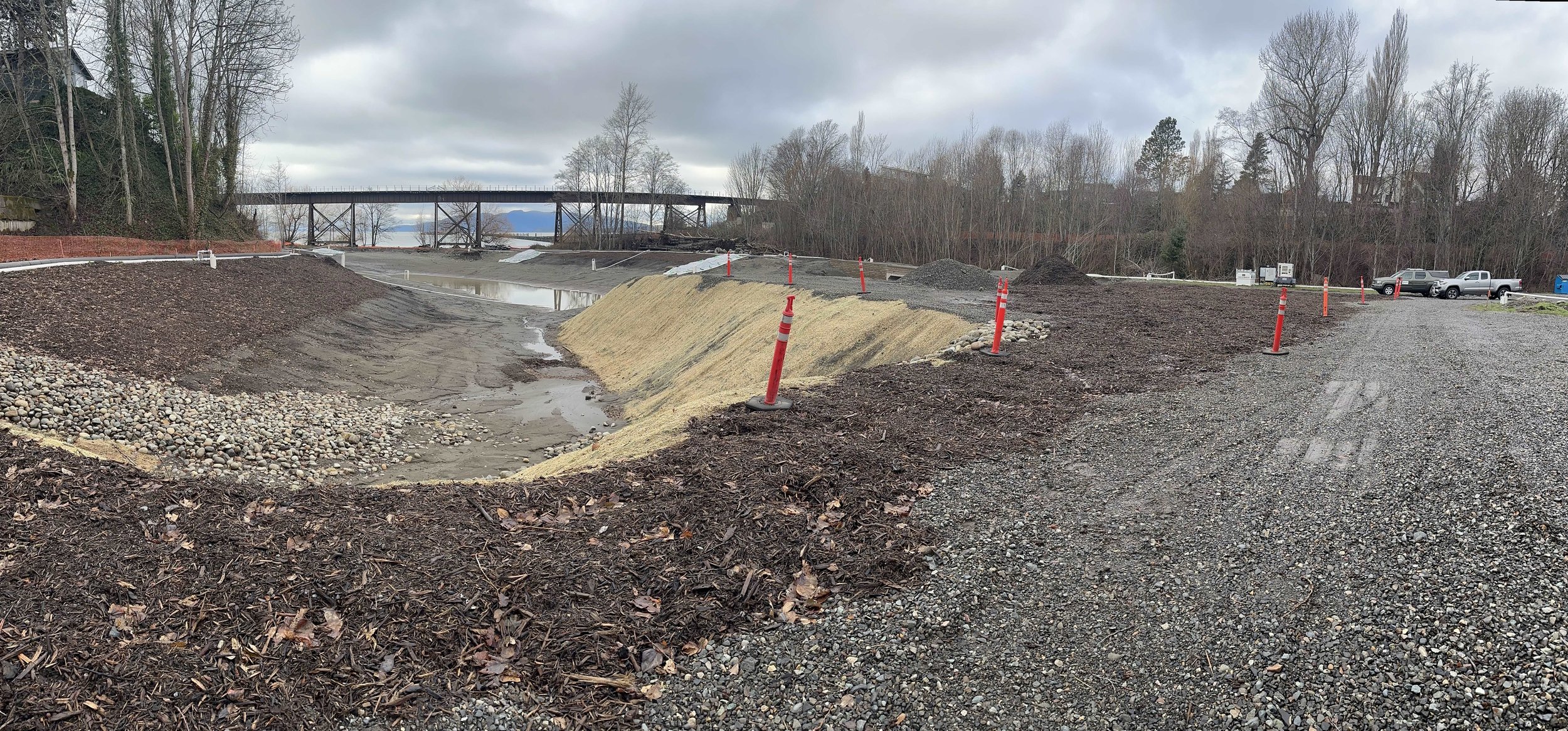At Little Squalicum Park along the Bellingham waterfront, bicyclists and dog walkers are rolling and strolling on new trails and over a new pedestrian bridge spanning Little Squalicum Creek. Under the bridge, the creek is now flowing freely into Bellingham Bay, mingling with the salt water as tides ebb and flow. These improvements are part of this City of Bellingham (City) restoration project that has created a new intertidal estuary to expand habitat for salmonids and other species.
According to a recent story in The Bellingham Herald, the $5.7 million restoration project removed a culvert that restricted creek flow and blocked fish passage, re-routed the creek, added trails and the pedestrian bridge, and created needed habitat along this stretch of the waterfront.
Construction of the new estuary at Little Squalicum Park, January 2023
Aspect worked closely with the City and as a subconsultant to Coastal Geologic Services, who designed the estuary and new route for the creek. Our focus was identifying and characterizing contamination that had migrated from the adjacent Oeser Company wood-treatment facility Superfund site onto the area. Principal Hydrogeologist Steve Germiat led Aspect’s team, working with Project Geologist Matthew von der Ahe to characterize the chemical quality of the future estuary sediment surface, which was over 10 feet below the original grade, and the soil to be excavated to reroute the creek channel to the bay. Once the site characterization was complete, they wrote the contaminated material management plan and construction specifications for managing excavated material and water produced during dewatering of the large excavation. During excavation for the estuary and rerouted creek, Staff Scientist Bo Ward oversaw screening and sampling of the excavated soil and Project Engineer Matthew Eddy helped profile and arrange final disposition of the materials.
Construction of the elements of the park and estuary are ongoing and scheduled to be completed in October 2023. Learn more about the project history on the City of Bellingham’s project site.


